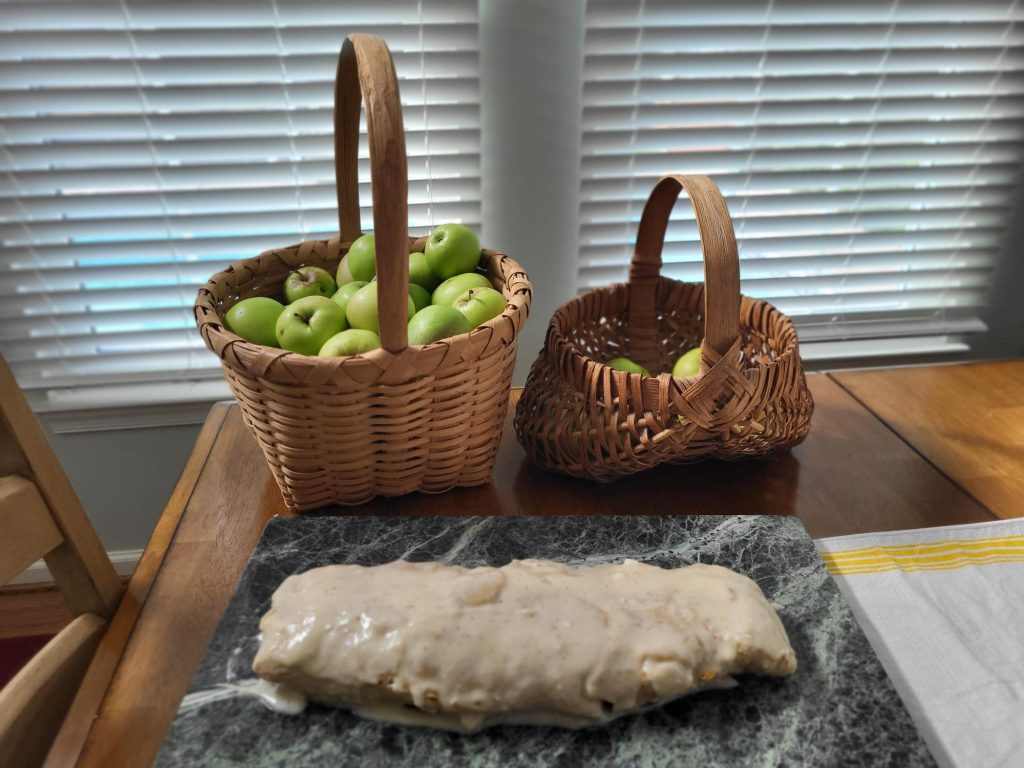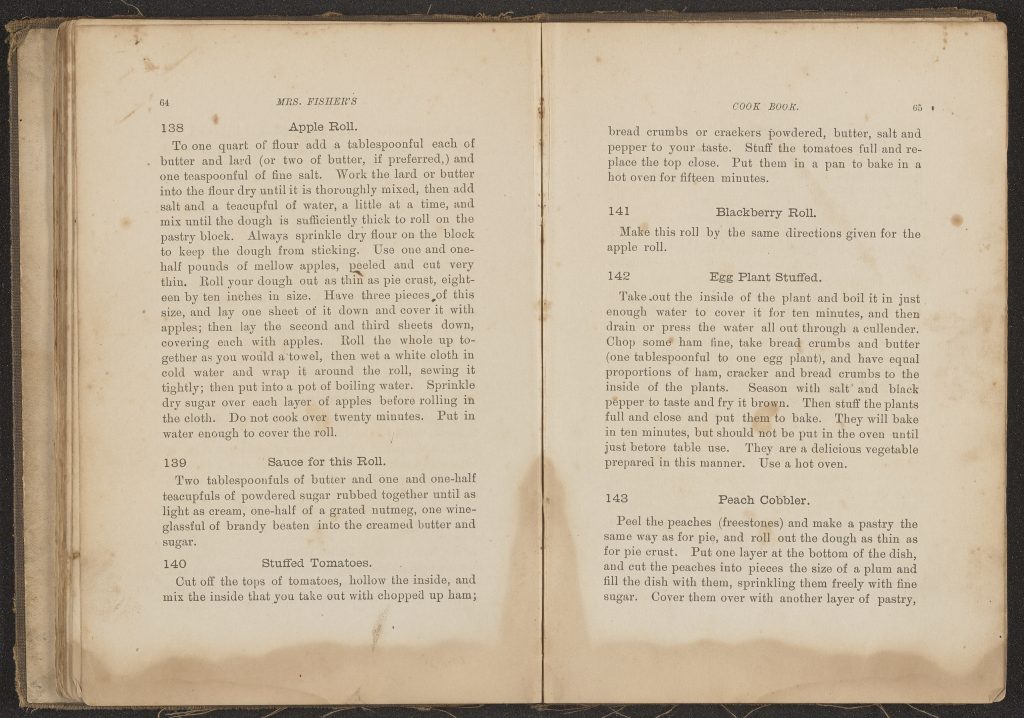We’re now deep into baking season, and while 2023’s apple harvest was a mixed bag nationally, Homewood Museum’s orchard of mostly apple (and a few pear) trees over-performed. As the fruit began to ripen in late summer, Homewood’s House Manager Lauren Degener and the JHU Museums’ Curator of Collections Michelle Fitzgerald headed out to collect the bounty. Then Lauren, a keen baker, took home some of the harvest and made an apple roll, but not just any apple roll. She prepared the fruit pastry by following the apple roll recipe in What Mrs. Fisher Knows About Old Southern Cooking, a recent acquisition to Special Collections.
Lauren Degener, left, and Michelle Fitzgerald, right, harvest apples from Homewood’s orchard over the summer.
As Outreach Librarian for the Department of Special Collections at the Sheridan Libraries, Heidi Herr spearheaded the 2020 acquisition of a first-edition copy of What Mrs. Fisher Knows. She was fascinated by both its content—160 antebellum recipes ranging from flavorful stews, gumbos, and roasted meats to biscuits, pies, and jams—and its author.
Mrs. Fisher is thought to have been born into slavery, eventually fleeing the post–Civil War South and resettling in San Fransisco, California. Through her cooking, she made a name and livelihood for herself. Unable to read or write, she talked through the 160 recipes in the cookbook, which is today recognized as only the second one authored by a Black woman in the United States.
When told about Degener’s project to bake Mrs. Fisher’s apple roll, Herr was delighted that the cookbook would be used. “One of the joys of working with historic cookbooks is that we each have the opportunity to become part of the legacy of the text by recreating the recipes and discovering the tastes of the past,” she said. Read on the learn about Degener’s experience using the recipe.
How many apples did you harvest from Homewood’s orchard?
LD: Approximately 60 in total.
Was the recipe easy to follow?
LD: It wasn’t the most difficult recipe in the world, but it was definitely not in the modern recipe structure. Rather than having the measurements at the top and the instructions combined, it is written in the way that someone would relay it verbally from memory. It definitely makes sense based on the fact that the recipes were relayed orally, but I found myself going back and having to undo steps to do things right.
Did you make any tweaks to it?
LD: I did make a change to the way it was cooked. It was supposed to be boiled for no more than twenty minutes, but there was no actual boil time. I did try the boil, I really tried, but when I took it out of the large pot, it looked . . . interesting. I ended up putting it on a pan and baking it at 350 degrees for 15 minutes on each side. Primarily, I was trying to get the water out of the roll. I also swapped the brandy in the sauce for heavy cream since there were no steps to cook the alcohol out.
How long did it take?
LD: About an hour, if I had to guess. Peeling and cutting the apples probably took the bulk of the time.
Would you recommend the apple recipe to others?
LD: I would, but definitely bake it. The sauce for it was delicious and I would definitely recommend using the heavy cream.
Were the Homewood apples the right kind of apples for the recipe?
LD: The Homewood apples were right for it, though I wish I had waited until they were a bit riper. Still, they were the perfect amount of sweet and fresh for it.
Did using the recipe make you think about Mrs. Fisher and her life experiences?
LD: It definitely made me think about the cooking process she would have experienced. There was very little reliance on sugar and spices and butter, which makes sense because it would have been difficult and expensive to get those products. Cooking-wise, the biggest thing that I talked to my parents about was the fact that the recipe called for boiling. Boiling something wrapped in fabric like that makes it all the more likely to burn yourself. When I pulled it out, there was boiling water going all over the place, so I can only imagine what it would have been like for Mrs. Fisher to pull that out of a pipping-hot pot that had less heat regulation than our pots do today.





